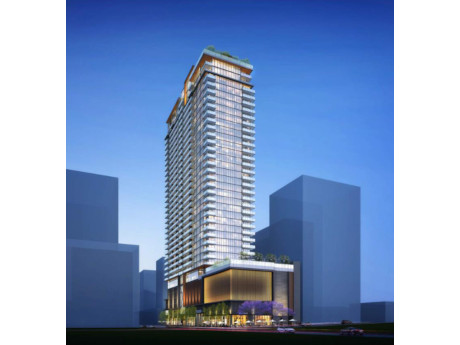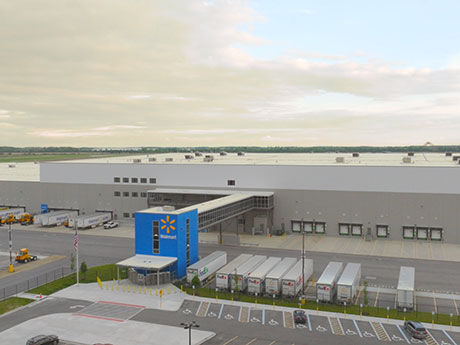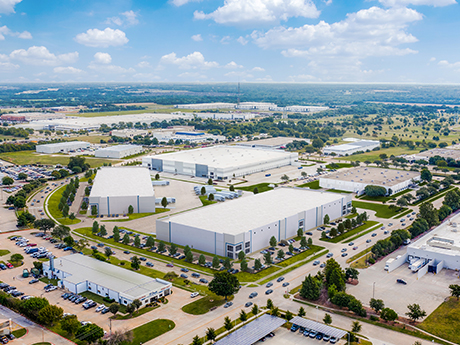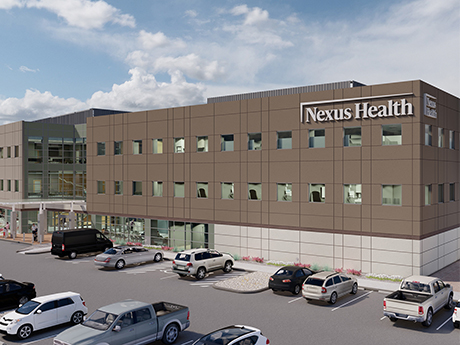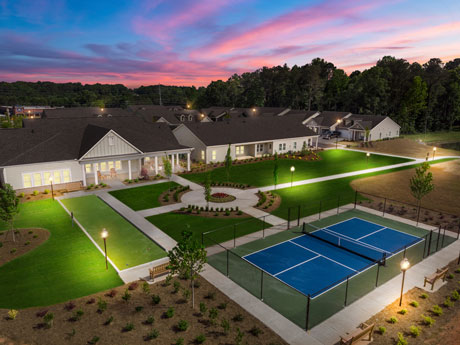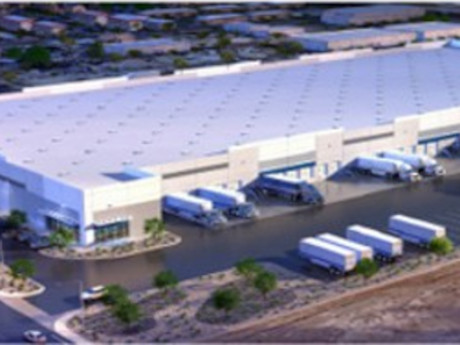— By Anthony Johnson, AJ Johnson and Chris Fiello, Pegasus Group — New Mexico is no different than the rest of the nation and is not immune to some of the same symptoms that are taxing the national retail market. However, New Mexico retail is also showing signs of resilience as it reshapes itself and finds ways to weather the storms of high interest rates, major brand closures, economic uncertainty and crime. As of now, the big issue is in the theft and resale of retail goods. Indeed, the problem of brazen theft — which is seen in countless cites in the nation — has led New Mexico Gov. Lujan Grisham to announce the revival of the Governor’s Organized Crime Prevention Commission. The hopes are to crackdown on this behavior, which is having a detrimental impact on the bottom line for New Mexico businesses, especially small ones. This onslaught of petty shoplifting to organized sprees of large-scale theft has caused retailers large and small to exit locations. Target, for example, announced in May that it was preparing for a loss of half a billion dollars this year because of rising theft. In 2023, New Mexico saw multiple store closures, including several …
Market Reports
When reflecting on Charlotte’s multifamily market over the past few years, several major trends drove unprecedented transaction volume — record-level rent growth, positive absorption despite a consistently robust pipeline of deliveries, strong population growth from high in-migration and rapidly increasing homeownership costs pricing residents out of the market. Charlotte has been a popular relocation destination for individuals and families, particularly from the Northeast, Midwest and other parts of the Southeast who are drawn to the low cost of living, warm climate and strong economy. Zillow ranks Charlotte as the No. 1 housing market for 2023, signaling a continued rise in home values and subsequent increased demand for rental housing from the growing population. In-migration has made Charlotte experience explosive growth and bolstered the population to over 2.7 million residents by year-end 2022, a 5.6 percent increase since 2018 compared to the national rate of 1.3 percent. Equally impressive is regional job growth, with non-farm payrolls increasing 7.9 percent over the same time frame. Much of Charlotte’s multifamily growth is attributed to capital investment from new employers across the metro, including Albemarle Corp.’s $180 million investment into a new research campus in University City bringing 200 new jobs, as well as …
— By Chad O’Connor, Executive Managing Director, Capital Markets, Marcus & Millichap Capital Corp. — Financing continues to be challenging for multifamily, whether in San Diego County or elsewhere. We have noticed a general shift in the market where the usual players are moving to the sidelines, thereby allowing new developers to enter the field. Many of the new developers do not have a track record that encourages a lender to underwrite a transaction. The more seasoned developers are focused on smaller developments with a higher probability of securing financing. The redirection to smaller developers in San Diego has directly impacted the institutional market. Despite this, we are still financing a lot of deals and capital is, indeed, available. Having proprietary programs in the market — especially on the bridge side of things — continues to keep us both busy and adding value for our clients. The lack of go-to lenders in the market is driving us to forge new relationships with growing lenders, building those connections, and paving way for future opportunities. Timing is a crucial variable when securing financing. Locking in the most favorable interest rates and moving swiftly through the closing process is very important in dynamic …
By Anthony Sanna, Integra Realty Resources The commercial real estate (CRE) market is facing a time of uncertainty and anxiety as we move further into 2023. A variety of factors are contributing to investor sentiment being low, including the threat of higher interest rates impacting commercial loans, fears of a declining CRE market, and concerns about recessionary pressures, inflation and a liquidity crisis currently taking shape. The question on everyone’s mind is where values are going and what trends we can expect in the coming months. Signs of a softening market National data analytics firms are already reporting a 10 percent value decline across most asset classes, except for industrial real estate. While this indicates there is downward pressure on pricing, it’s important to remember that appraisal data is somewhat backward-looking and may lag behind current pricing trends. Additionally, tracking recent transactions from six to nine months ago may not represent the boots on the ground experience happening at this very moment. Admittedly, appraisers are rear-view mirror-focused (tracking transactions) while the actual market is windshield-focused (future transactions). Despite this, recent examples in daily work indicate a downward pricing trend. Recent purchase contracts have been re-traded and amended, often with lower …
By Ben Wallace, SIOR, vice president, Colliers Over the past decade, “suburban industrial” buildings have become more critical than ever. A suburban industrial building can be defined as one that is located within the suburbs of a major metroplex and designed for small- to medium-size users with above-average allotments of office/showroom space to accommodate service and light distribution uses. The typical building and infrastructure designs naturally limit heavy truck traffic and achieve higher rental rates, deterring heavy distribution and manufacturing users from locating there. With macro-level shifts in how people shop for and acquire goods and services, the need for suburban industrial buildings that are located near consumers has become increasingly important. Most cities have done an excellent job of regulating and altering development standards for these assets to meet this need while being careful to avoid creating rundown industrial areas in their communities. These cities have achieved this goal by elevating development standards to feature clean concrete exterior façades as well as the screening of dock loading areas and attractive glass entrances. The reason that many of these items are important is that the vast majority of these suburban industrial developments are not appropriately zoned when developers come to …
Higher-Quality Properties, Downsizing Drive Strong Office Leasing Activity in New Mexico
by Jeff Shaw
— By John Ransom, Senior Vice President and Principal, Colliers — Albuquerque MSA office users continue to closely evaluate real estate decisions post-pandemic. The leasing trend is pivoting toward quality properties with landlords upgrading their building systems, security and amenity offerings. Tenant improvement costs are central to lease negotiations, so matching a tenant with space that requires the least amount of renovations to meet their needs is critical for both the tenant and the landlord to make a deal. In any event, tenants often have to share in the TI costs with upfront capital or amortizing a portion of the construction expense into the rental rate. This leads to longer lease terms and additional lease securitization requirements. Beneficial occupancy and other creative incentives are also being offered by landlords in lieu of additional tenant improvement dollars. Companies looking to downsize are considering a trade up in building/space quality. The upgrade has little impact to overall real estate expense, while improving the working conditions for their employees and ability to recruit in a competitive hiring climate. The office vacancy rate has steadily decreased to about 12 percent from a high of 20 percent five years ago. The bulk of vacancies are …
Against the backdrop of rising interest rates, recent financial stress and murkiness over the Federal Reserve’s ultimate direction and economic implications, dealmaking in the first half of 2023 has remained exceedingly challenged across all real estate sectors as wide bid-ask spreads persist. However, compared to other spaces, rental housing in the Southeast remains relatively healthy from a fundamentals perspective, despite supply-driven softening in the near term. This trend is evident in many major markets, including cities like Atlanta. Occupancy and rent growth remain healthy in Atlanta. The rental vacancy rate for Atlanta as of January 2023 reached 5.4 percent, a 0.9 percent decrease over the previous year, based on data from the U.S. Census Bureau. This falls below the national average of 5.8 percent for the fourth quarter of 2022. The median rental rate in January 2023 was also up 4.3 percent year-over-year, reaching $1,941. Population growth, employment opportunities, infrastructure investments, a business-friendly environment and other demand drivers continue to intensify Atlanta’s need for housing; and long term, the outlook for rental housing in the metro is very strong. More than 6 million people now live in the region, according to recent Census data. The Atlanta Regional Commission predicts more …
— By Reg Kobzi, Senior Vice President, CBRE — Despite economic headwinds and uncertainty, there remains a positive sentiment within the San Diego retail market due to the historically low vacancies that continue to persist quarter over quarter. Inflation across consumer categories erodes spending power and challenges the retail landscape, as well as the greater economy. Landlords proactively track consumer spending and tenant resilience to mitigate risk. Inflation has proven stubbornly high, but it is predicted to decline over the coming months as the economy cools. CBRE believes the rate hiking cycle is nearing an end, and the Feds should start to cut rates by the end of the year. Despite the economic challenges, San Diego is healthy as its unemployment rate has remained relatively steady and seen significantly less expansion than at the state and national levels. June is the 35th consecutive month that unemployment in San Diego was below the state norm and the 12th straight month below the U.S. average. San Diego retail vacancy stabilized at the beginning of 2023, mirroring the rate from the last quarter of 2022 of 4.9 percent. Since vacancy rates are indicators of the market’s overall health, this stabilization is a valuable …
By Anthony Armbruster, Colliers Although converting former office buildings to multifamily properties is by no means a new practice, conversions have been on the rise in recent years due to the changing work environment and office landscape. While the COVID-19 pandemic has started to fade away in many peoples’ minds, several of the changes in the work environment during that time have not. Many formerly in-office employees continue to work from home or have hybrid schedules post-pandemic. Additionally, tenants who are moving into new office spaces have shown a preference for smaller, more efficiently laid out, amenity-rich and suburban Class A office spaces. These changing consumer preferences have resulted in higher vacancies and fewer new tenants for older downtown office buildings than before the pandemic. Consequently, many of these older buildings are being converted into residential spaces, exemplifying the trend. An office building may be considered for a residential conversion when it is no longer economically feasible to continue running the building as such. However, not every office building at the end of its economically useful life is a suitable candidate for a residential conversion. Factors such as a building’s layout, location, age and cost of conversion play the most …
— By Will Strong, Executive Vice Chair, Industrial Capital Markets, Cushman & Wakefield — Albuquerque has emerged as a vibrant hub for industrial development, showcasing a thriving economy and a favorable business climate. With its strategic location, robust infrastructure and supportive policies, the city has become an attractive destination for ecommerce and logistics companies seeking growth and expansion. Situated in the heart of the Southwest, Albuquerque enjoys a prime location that serves as a gateway to various markets. It is conveniently connected to major transportation networks, including interstates 25 and 40, making it accessible for shipping goods across the region. The city is served by the Albuquerque International Sunport, facilitating efficientair freight and business travel. The market’s availability of reliable utilities, such as water, electricity and high-speed internet, further strengthens the city’s industrial ecosystem. The Albuquerque industrial market grew more than 300,000 square feet in the past year. Demand has been strong enough to continually outpace deliveries, enabling vacancies to tighten below the historical average, according to CoStar. Vacancies have fallen to just 2.4 percent, well below the national average of 4.5 percent. Albuquerque has a diversified base of industries, led by aerospace, high-tech manufacturing, distribution and logistics, technology and …




